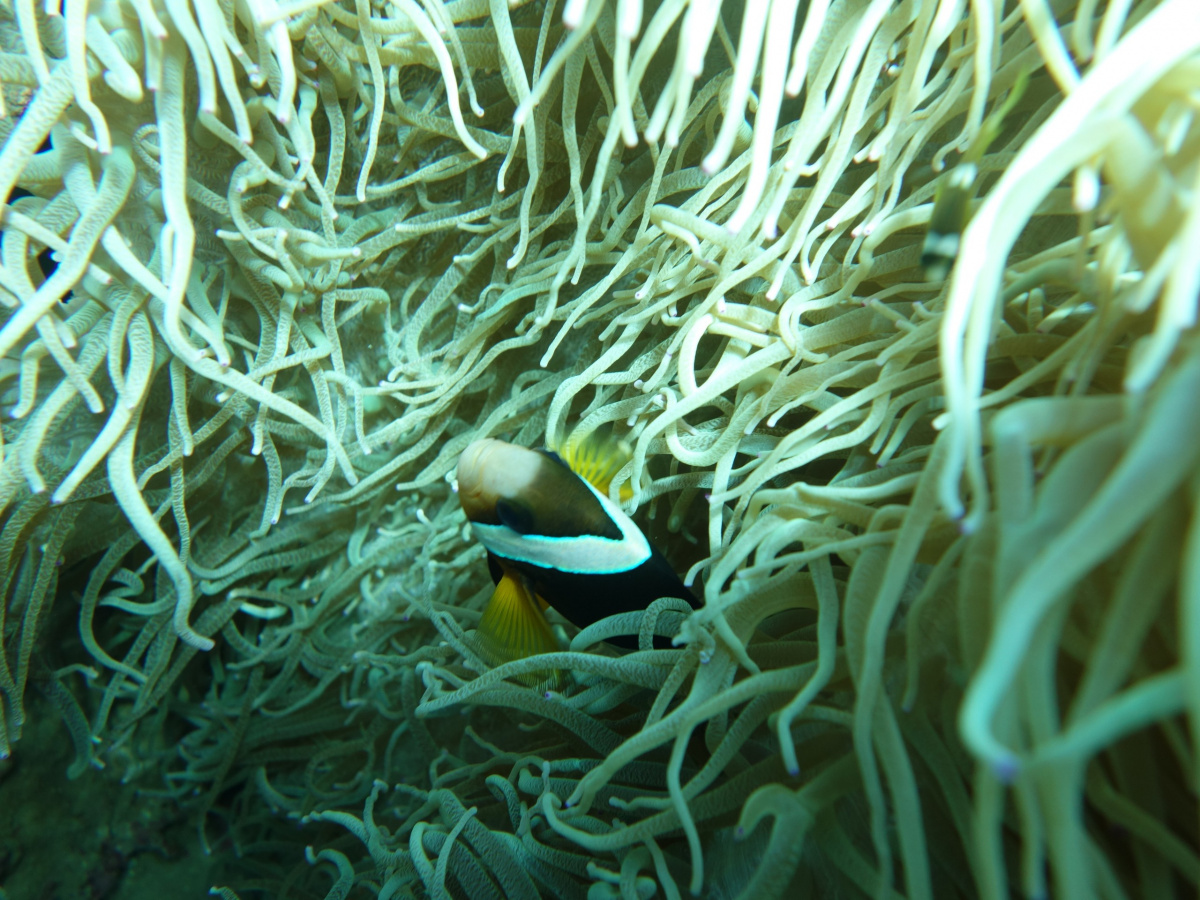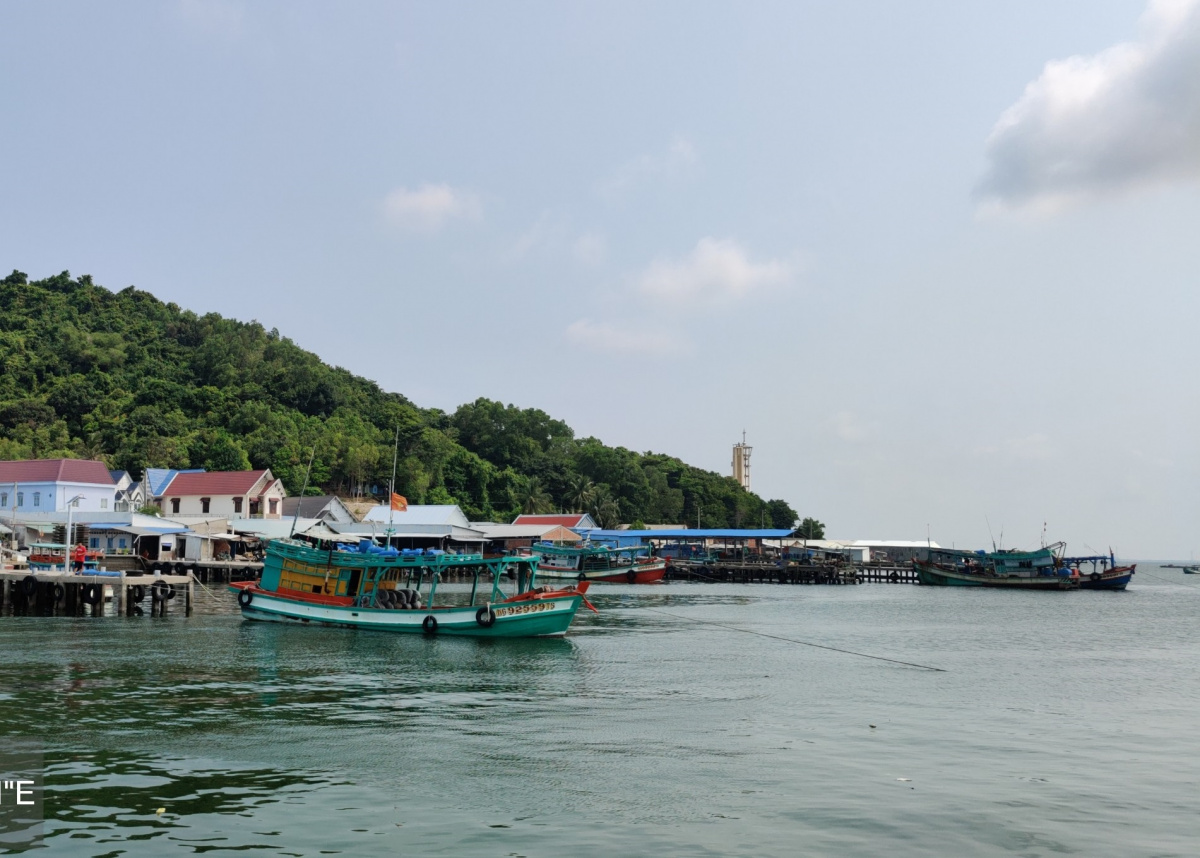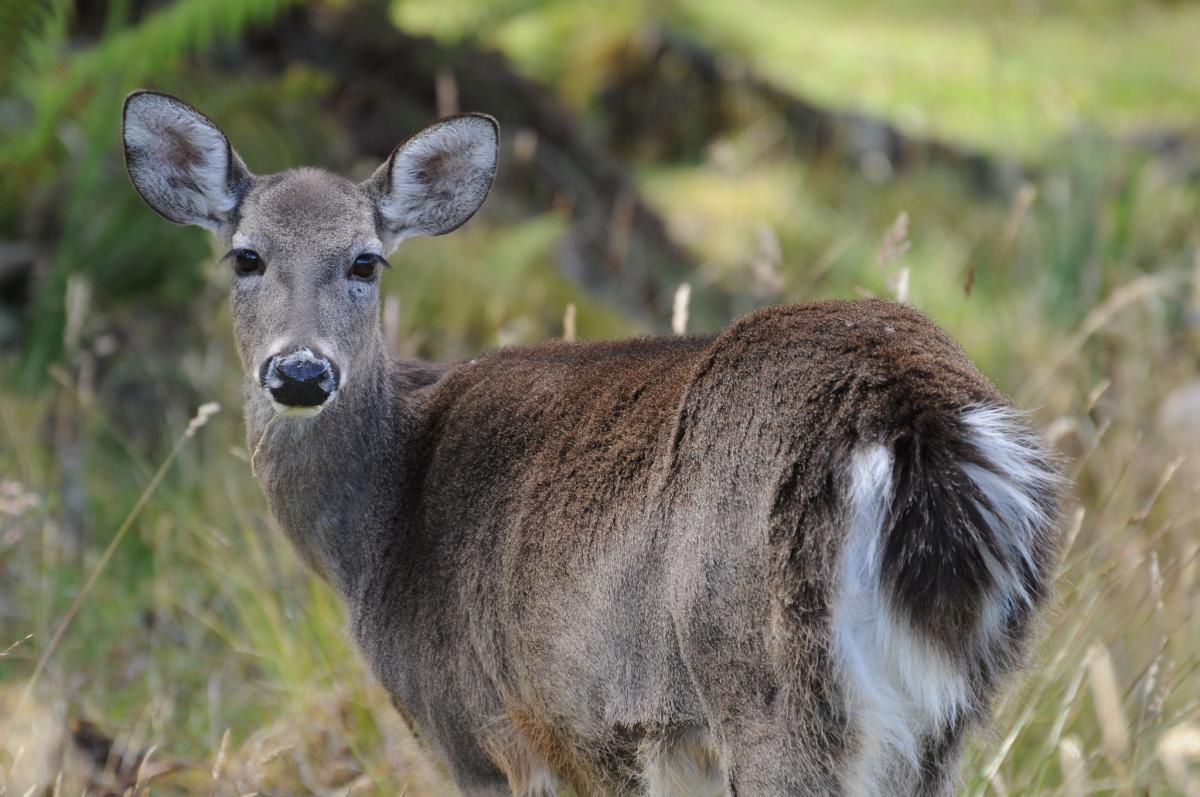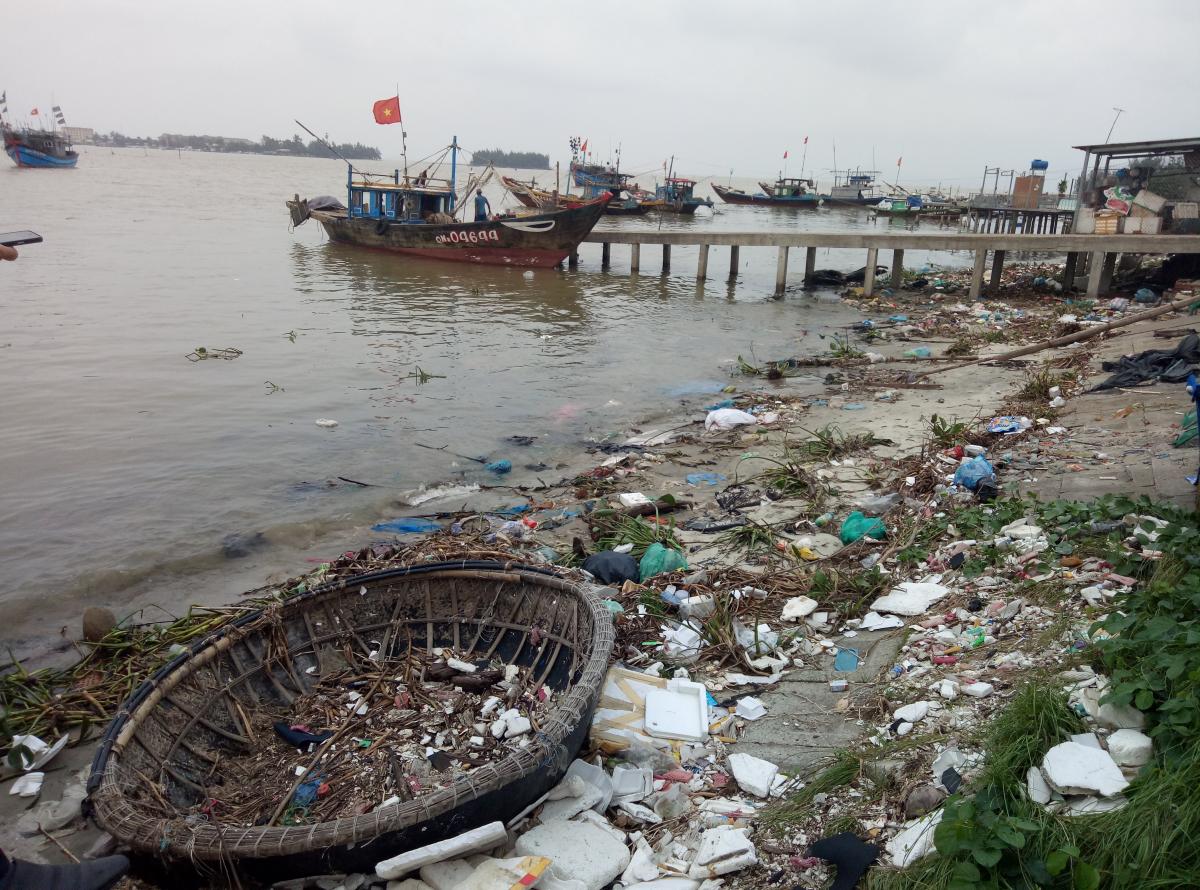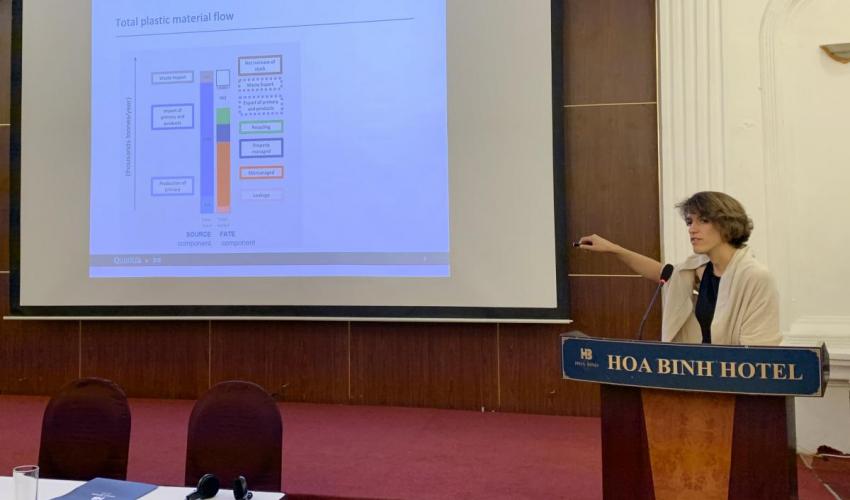Exploring Kien Giang’s island clusters
As part of the IUCN-led USAID Mekong Delta Coastal Habitat Conservation project, IUCN and Kien Giang Department of Agriculture and Rural development (DARD) cooperated on a rapid assessment of three island clusters in the West Sea between the mainland and Phu Quoc: Nam Du, Ba Lua, and Hai Tac.
The West Sea is rich in sea grass beds, coral reefs, and mangrove forests, and is home to many globally threatened marine species including dugong, Irrawaddy dolphin, Green turtle, and Hawksbill turtle. To strengthen conservation of these habitats, which are also important for anchovy and other commercially important fish species, the project proposes the establishment of Fishery Protection Areas (FPAs). FPAs are defined in the 2017 revision of the Fisheries Law and implementation Circular 19/2018/TT-BNNPTNT, and can be approved by the province.
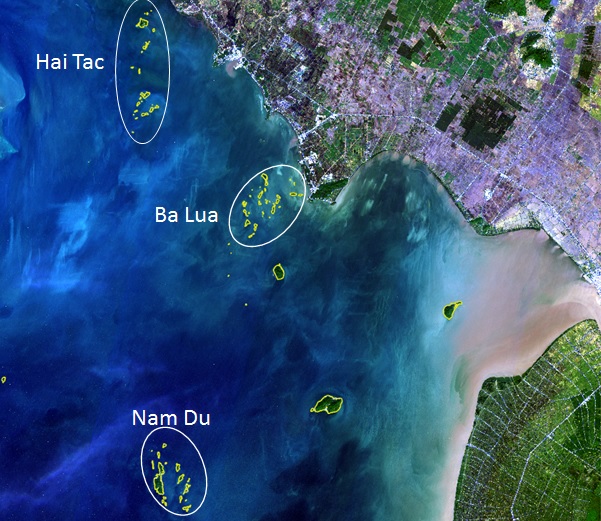 Photo: Satellite image of 3 cluster island in Phu Quoc NP © IUCN Viet Nam
Photo: Satellite image of 3 cluster island in Phu Quoc NP © IUCN Viet Nam
The three island clusters have been the subject of very little research, and to start to fill this knowledge gap, IUCN and the Kien Giang DARD, together with the Vietnam Directorate of Fisheries (DFISH), the Institute of Fisheries Economics and Planning, and WWF Vietnam, organized a 3-day visit to all three islands, each of which comprises a constellation or archipelago of small islands. Departing from Rach Gia, DARD kindly made available a speedboat, a substantial in-kind contribution that greatly reduced travel time.
The islands making up Nam Du are surrounded by coral reefs, several of which are in very good condition, notably Hon Ong, Hon Nom, Hon Bo Dap, Hon Mau, and Hon Dau. Ba Lua is home to coral reefs and large sea grass beds. Ba Hon Dam has about 40 hectares of sea grass, mostly Enhalus acoroides and Thalassia hemprichii with coverage of healthy and intact beds up to 90%. In Hai Tac, sea grass beds are mainly found on Tre Nho, which has about 16 hectares, mostly Cymodocea serrulate and Thalassia hemprichii.
These sea grass species are the most common in the West Sea and because of their length provide habitat for fish and benthic animals and are important food sources for dugongs and turtles.
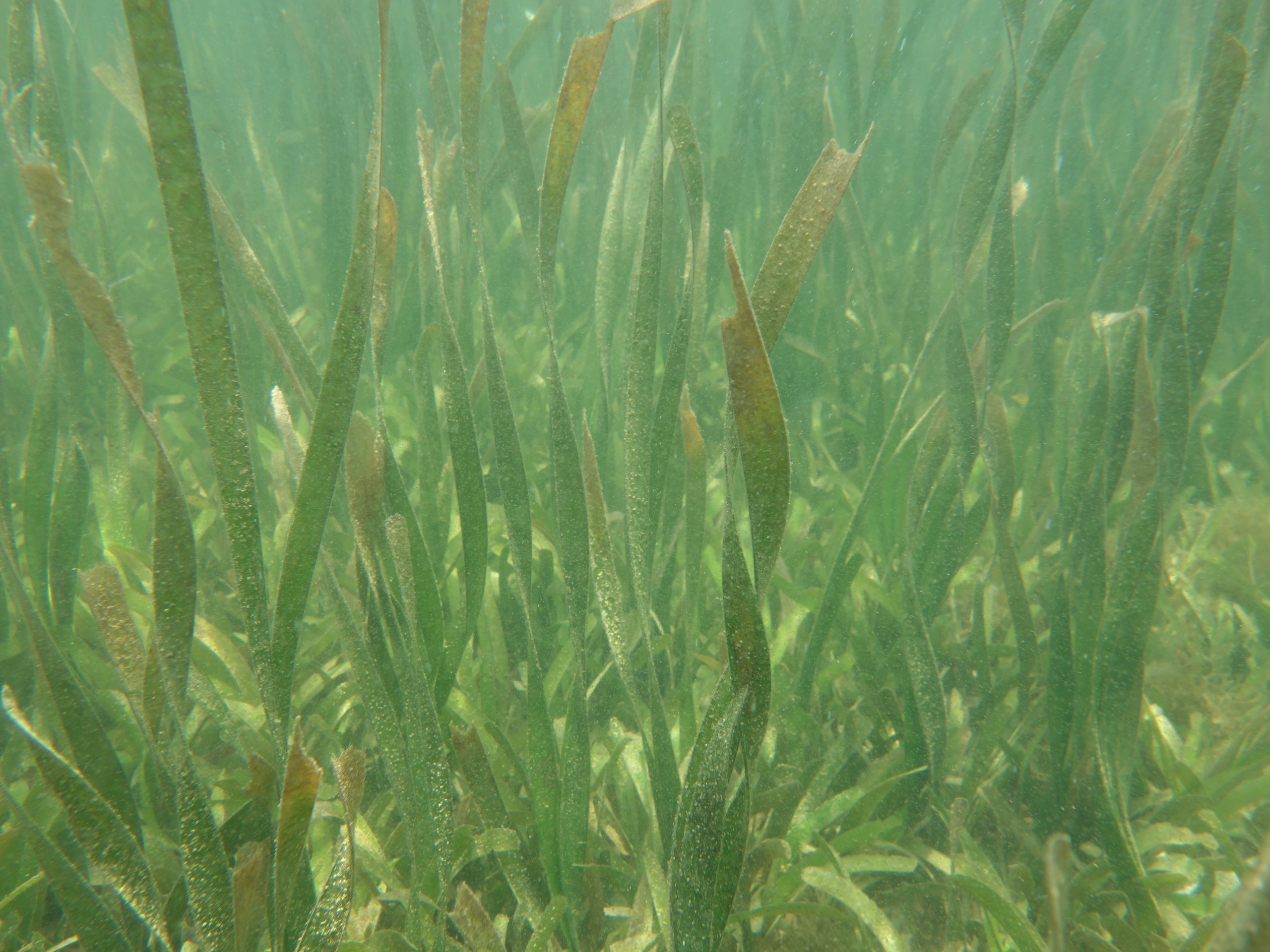 Photo: Enhalus acoroides in Ba Hon Dam island © IUCN Viet Nam
Photo: Enhalus acoroides in Ba Hon Dam island © IUCN Viet Nam
Through interviews with commune leaders and other locals, we drew some initial conclusions.
First, the marine habitats of these islands are relatively intact and the fishing is still rich, particularly for blue swimming crabs and octopus, which are in high demand from tourists.
Second, there is a move out of capture fisheries into mariculture. Australis, a US company (https://www.thebetterfish.com/), are planning a 2,000-hectare high-technology ocean farm in Nam Du to produce barramundi (Asian sea bass) for export. Locals do smaller scale mariculture of grouper and cobia for export to China.
Third, cross-border fishing between Vietnam and Cambodia remains a key issue. Vietnamese fishers who have been caught fishing in Cambodia have been fined, while Cambodian fishers caught in Vietnamese waters have been merely reprimanded. On other hand, Vietnamese trawlers do much more damage to the sea bed than Cambodian boats, which use gillnets to catch swimming crabs..
Finally, in all three island clusters the commune leaders are keen to establish FPAs in line with the new law. A 500-hectare FPA was established in Ba Lua in 2018 but was abandoned after repeated incursions by outside boats. This points to a chronic problem that we have observed elsewhere in Vietnam: when government fails to act against illegal fishing, local fishers lose interest, and conservation collapses.
